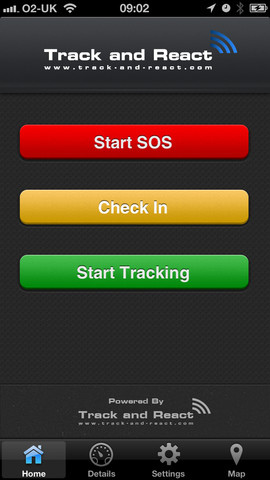
Guessing isn’t good. Knowing how, what, why and when your symptoms increase or decrease can help expand the likelihood that the choices you’re making reduce symptoms and take you further on the path to wellness
According to the Pew Research Center, sixty-nine percent of U.S. adults track a health indicator like weight, diet, exercise or symptoms of a chronic condition. If you’re not tracking your symptoms, you’re missing an easy opportunity to improve your health. All of the systems below make it possible for you to better understand how triggers, therapies and side effects affect how you feel. Because they help you perceive patterns and trends you might not otherwise see, they can point out ways to increase your overall wellbeing.
In part 1, we discussed paper-based tracking systems and the Healthminder Personal Wellness Journal. We also offered links to discounted, downloadable health tracking pages on etsy.com. Part 2 detailed some apps that help you track symptoms. In part 3, we’ll discuss a few of the online and membership-based symptom tracking programs.
Online systems
If you google “symptom diary,” “symptom tracker,” or “symptom tracker app,” you’ll see there are many programs available. Here are just few:
Online program can be used by anyone with access to the Internet; mobile versions compatible with iOS and Android systems. Free.
This well-organized computer-based program from the Arthritis Foundation allows you to track nutrition, physical activity, stress levels, medication, sleep quality, pain, fatigue and more. They also have downloadable apps for your iPhone, iPad and Android. A simple interface (just click or slide) captures key daily activities and symptoms. The instant results – a personalized “Arthritis Impact graph” — is supposed to reveal the potential relationship between your actions and your symptoms. This comprehensive program tracks darn near everything, including exercise, diet, meds, symptoms, sleep, social interaction. It’s intuitive and easy to use. I used it for just a short time, and it was useful for motivating me to walk and eat healthier.
Online program can be used by anyone with access to the Internet; 30-day free trial, $3 monthly subscription fee after that.
On her website, co-founder and chronic Lyme patient Lindsay Pera says she came up with the idea for Chronic Tracker:Lyme because she wanted a more effective method to report symptom progression over time to her Lyme-literate doctors. Frustrated by paper-based intake forms and unable to find a satisfactory computer-based solution, Lindsay decided to create her own solution. Using Dr. Burrascano’s work as a starting point, Lindsay added reporting functionality that’s designed to figure out, is what I’m doing helping or hurting? The website includes a forum for users to share their Lyme stories and provide mutual support, advice, and suggestions.
Online program can be used by anyone with access to the Internet; standard membership is free; premium memberships cost $20 for 90 days or $40 per year.
The basic free program uses daily health trackers to track the last 30 days of your daily health and fitness information and offers integrated reports and online charts to help you meet your health goals. If you want to store and track your data for more than 30 days, upgrade options allow you to store daily entries for longer periods of time. This system offers “hundreds of reports that make it easy to share this information with your health advisors or family.” You can also create goals. Using online analysis tools, you can look at trends in your diet, exercise, medications, body measurements, heart rate, and body composition readings, among others. (There are so many trackers, it would be hard to include them all here). You can also create “dashboards” of your most important health fields to quickly monitor and chart your progress over time. All charts can be exported to images, making it easy to print, email and share charts. There’s a writing journal, and ways to integrate calendars and a health history, too.
Online program can be used by anyone with access to the Internet. Free.
Symptom Journal membership website features web-based health tools that are designed to help people with chronic health conditions reduce their symptoms and live a healthier life. By answering daily questions and then discovering through their reports how, what, why, and when their symptoms increase or decrease because of their daily choices, nutrition, and treatment plan allowing them and their doctors to make timely decisions that can reduce symptoms and improve their quality of life. It seems to have most of what people would want to track (and then some). There are supposed to be forums and ways to connect with people, but the forums didn’t seem very busy to me.
These are only 4 of the many systems out there to track symptoms. Whether you use a paper-based or computer system, an app or a journal, knowing how, what, why and when your symptoms increase or decrease can help you improve your overall health and wellbeing.
Patti Stilley Schmidt is a health coach, counselor and consultant. She’s a chronic illness survivor, with years of experience managing, researching and advocating to improve the lives of those with stigmatized illnesses. She’s been a peer counselor, support group leader, national advocacy organization board member, and has written dozens of articles on these topics, along with the book Mold Warriors with Dr. Ritchie Shoemaker. She is finishing up a Masters degree in Clinical and Counseling Psychology degree at Chestnut Hill College in Philadelphia.
